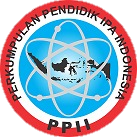SCIENCE, ENGINEERING, AND TECHNOLOGY OF DYE SENSITIZED SOLAR CELLS: A DIDACTICAL DESIGN BASED ON TECHNOCHEMISTRY EDUCATION
DOI:
https://doi.org/10.15575/jtk.v5i2.6741Keywords:
didactical design, dye-sensitized solar cells, nature of science and technology, technochemistryAbstract
This research was conducted to build a view of the nature of science and technology (VNoST) chemistry education students' ability through the didactical design reconstruction. The material taken is Dye-Sensitized Solar Cells (DSSCs) topic with technochemistry education model. It is a model that looked at education from the perspective of engineers and scientists who work not only on inquiry but also on a design perspective. Based on literature research, Indonesian students had low academic literacy performance as revealed in PISA (Program for International Student Assessment) study from 2000-2015. This problem can be caused by a weak teacher's abilities of the nature of science and technology (VNoST). This research's method is Research and Development (R&D) through the Model of Educational Reconstruction (MER). The instruments used were the VNoST questionnaire, interview guidelines, and content analysis guidelines. This study's subjects were 25 prospective chemistry education students in the 6th semester for pre-conception study and ten students for implementation study at one of State Universities in Indonesia. The didactical design of learning that has been developed had several advantages, including the prediction of student responses and the anticipation of educators as well as the essential material that is a barrier to student learning. Analysis of the VNoST understanding construction patterns is explored further so that the reasons that underlie students in defining science and technology and their relationship are obtained. The implementation study proved that understanding VNoST students after attending didactical design learning improved by changing students' views on science and technology to be more accurate.References
Aikenhead, G., and Ryan, G. (1992). The development of a new instrument: “Views on Science–Technology–Society†(VOSTS). Science Education, 76(5), 477–491. https://doi.org/10.1002/sce.3730760503
Botton, C., and Brown, C. (1998). The reliability of some VOSTS items when used with pre-service secondary science teachers in England. Journal of Research in Science Teaching, 35(1), 53–71. https://doi.org/10.1002/(SICI)1098-2736(199801)35:1<53::AID-TEA4>3.0.CO;2-M
Chamizo, J. A. (2013). Technochemistry: one of the chemists’ ways of knowing. Found Chem, 15, 157-170. https://doi.org/10.1007/s10698-013-9179-z
Chien, S. I., Su, C., Chou, C. C., & Li, W. R. (2018). Visual Observation and Practical Application of Dye Sensitized Solar Cells in High School Energy Education. Journal of Chemical Education, 95(7), 1167–1172. https://doi.org/10.1021/acs.jchemed.7b00484
Duit, R., Gropengiesser, H., Kattmann, U., Komorek, M., and Parchmann, I. (2012). The model of educational reconstruction–A framework for improving teaching and learning science. In Science education research and practice in Europe, 13-37. Brill Sense, 2012. https://doi.org/10.13140/2.1.2848.6720
Enciso, P., Luzuriaga, L., & Botasini, S. (2018). Using an Open-Source Microcontroller and a Dye-Sensitized Solar Cell to Guide Students from Basic Principles to a Practical Application. Journal of Chemical Education, 95(7), 1173–1178. https://doi.org/10.1021 /acs. jchemed.8b00094
Hagfeldt, H., Boschloo, G., Sun, L., Kloo, L., & Pettersson, H. (2010). Dye-Sensitized Solar Cells: Chemical Reviews, 110(11), 6595-6693. https://doi.org/10.1021/cr900356p
Holbert, N., Russ, R., & Davis, P. (2015). The use of cognitive clinical interviews to explore learning from video game play. (July), 7–10. Retrieved from https://www.semanticscholar.org/paper/The-use-of-cognitive-clinical-interviews-to-explore-Holbert-Russ/ea82d6d85f2aff2a6bf268a59ec752e0a438bbce
Kosyachenko, L. A. (2011). Solar Cells- Dye-Sensitized Devices. Croatia: Intech Published.
Mayring, P. (2014). Qualitative content analysis: theoretical foundation, basic procedures and software solution. Klagenfurt. Retrieved from https://nbn-resolving.org/urn:nbn:de:0168-ssoar-395173
Niebert, K., & Gropengiesser, H. (2013). The model of educational reconstruction: A framework for the design of theorybased content specific interventions. The example of climate change. In T. Plomp, & N. Nieveen (Eds.), Educational design research – Part B: Illustrative cases (pp. 511-531). Enschede, the Netherlands: SLO.
Novak, J.D. (2002). Meaningful learning: The essential factor for conceptual change ini limited or inappropriate propositional hierarchies leading to empowerment of learners. Science education, 86(4), 548-571. https://doi.org/10.1002/sce.10032
OECD. (2001, 2004, 2007, 2010, 2013 and 2016). PISA 2000, 2003, 2006, 2009, 2012 and 2015 Results: What Students Know and Can Do, OECD Publishing, Paris.
Smith, Y. R., Crone, E., & Subramanian, V. (Ravi). (2013). A Simple Photocell To Demonstrate Solar Energy Using Benign Household Ingredients BT - Journal of Chemical Education. Journal of Chemical Education, 90(10), 1358–1361. https://doi.org/10.1021/ed3001232
Tairab, H. H. (2001). How do pre-service and in-service science teachers view the nature of science and technology?. Research in Science & Technological Education, 19(2), 235-250. https://doi.org/10.1080/02635140120087759
Tala, S. (2013). Nature of Technoscience. Dalam Clough, M.P., Olson, J.K., Nlederhauser, D.S. (Eds). Nature of Technology: Implications for Learning and Teaching. USA: Sense Publisher.
Veerappan, G., Bojan, K., & Rhee, S. W. (2011). Sub-micrometer-sized graphite as a conducting and catalytic counter electrode for dye-sensitized solar cells. ACS applied materials & interfaces, 3(3), 857-862. https://doi.org/10.1021/am101204f
Vesterinen, V. M., Aksela, M., & Lavonen, J. (2013). Quantitative analysis of representations of nature of science in Nordic upper secondary school textbooks using framework of analysis based on philosophy of chemistry. Science & Education, 22(7), 1839-1855.https://doi.org/10.1007/s11191-011-9400-1
Downloads
Published
Issue
Section
License
Authors who publish with this journal agree to the following terms:
- Authors retain copyright and grant the journal right of first publication with the work simultaneously licensed under a  Creative Commons Attribution-ShareAlike that allows others to share the work with an acknowledgement of the work's authorship and initial publication in this journal.
- Authors are able to enter into separate, additional contractual arrangements for the non-exclusive distribution of the journal's published version of the work (e.g., post it to an institutional repository or publish it in a book), with an acknowledgement of its initial publication in this journal.
- Authors are permitted and encouraged to post their work online (e.g., in institutional repositories or on their website) prior to and during the submission process, as it can lead to productive exchanges, as well as earlier and greater citation of published work (See The Effect of Open Access).








